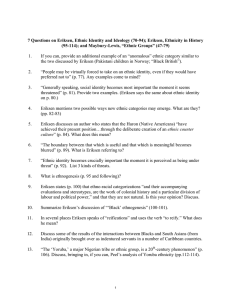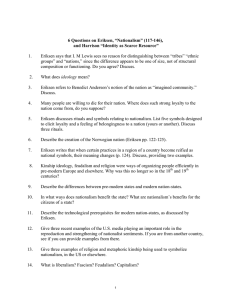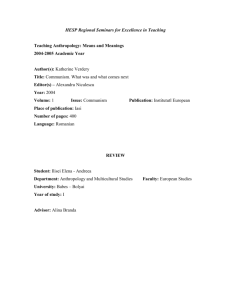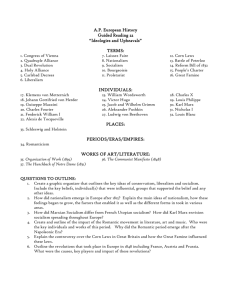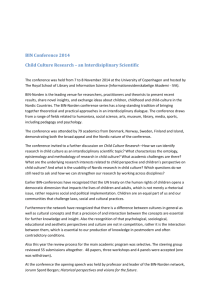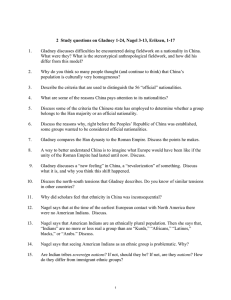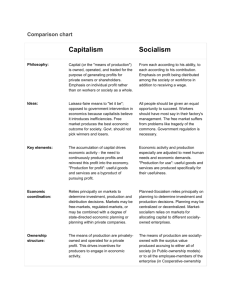Study Questions on Verdery and Eriksen 143-178
advertisement
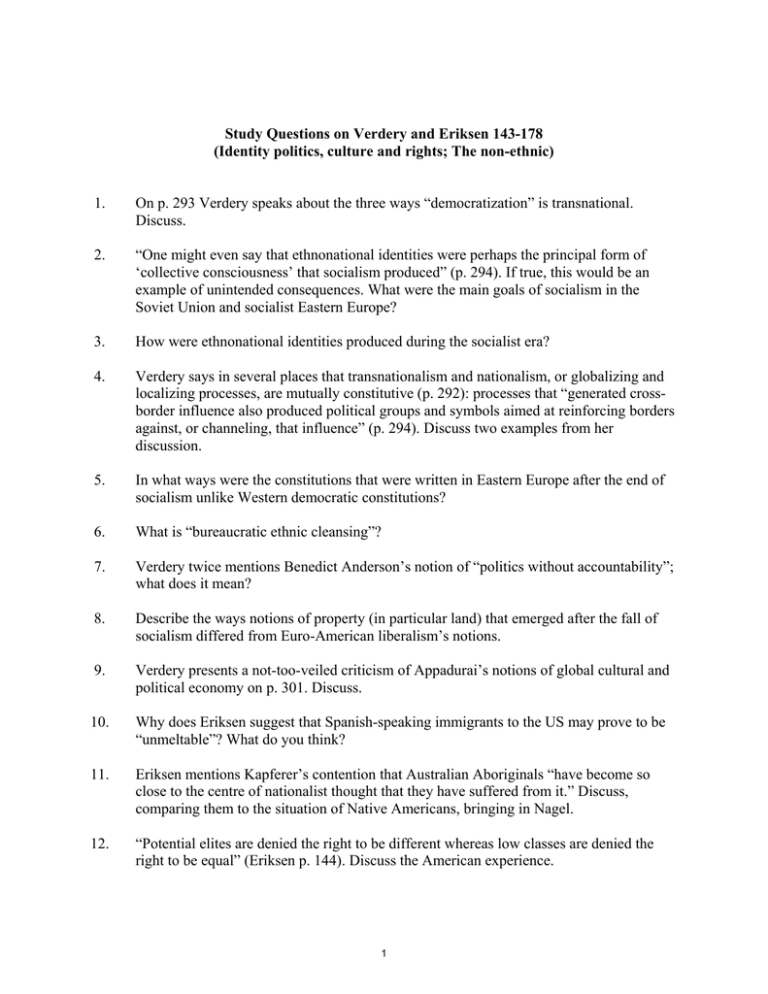
Study Questions on Verdery and Eriksen 143-178 (Identity politics, culture and rights; The non-ethnic) 1. On p. 293 Verdery speaks about the three ways “democratization” is transnational. Discuss. 2. “One might even say that ethnonational identities were perhaps the principal form of ‘collective consciousness’ that socialism produced” (p. 294). If true, this would be an example of unintended consequences. What were the main goals of socialism in the Soviet Union and socialist Eastern Europe? 3. How were ethnonational identities produced during the socialist era? 4. Verdery says in several places that transnationalism and nationalism, or globalizing and localizing processes, are mutually constitutive (p. 292): processes that “generated crossborder influence also produced political groups and symbols aimed at reinforcing borders against, or channeling, that influence” (p. 294). Discuss two examples from her discussion. 5. In what ways were the constitutions that were written in Eastern Europe after the end of socialism unlike Western democratic constitutions? 6. What is “bureaucratic ethnic cleansing”? 7. Verdery twice mentions Benedict Anderson’s notion of “politics without accountability”; what does it mean? 8. Describe the ways notions of property (in particular land) that emerged after the fall of socialism differed from Euro-American liberalism’s notions. 9. Verdery presents a not-too-veiled criticism of Appadurai’s notions of global cultural and political economy on p. 301. Discuss. 10. Why does Eriksen suggest that Spanish-speaking immigrants to the US may prove to be “unmeltable”? What do you think? 11. Eriksen mentions Kapferer’s contention that Australian Aboriginals “have become so close to the centre of nationalist thought that they have suffered from it.” Discuss, comparing them to the situation of Native Americans, bringing in Nagel. 12. “Potential elites are denied the right to be different whereas low classes are denied the right to be equal” (Eriksen p. 144). Discuss the American experience. 1 2 13. Discuss Eriksen’s presentation of “the paradox of multiculturalism.” 14. Why is wearing the headscarf such a problem in French public schools when it isn’t in American ones? 15. Discuss the controversy relating to communitarianism and liberalism, or how liberalism can take account of “the intrinsic value of cultural difference.” 16. How “difference-blind” or “difference-aware” should society be? 17. What is your solution to reconciling liberal individualism with a recognition of cultural difference (p. 148)? 18. Do individuals have a right to belong to a culturally defined (ethnic, religious or otherwise) community, and the right to opt out (p. 148)? How does this fit into Messer’s discussion of the history of human rights (reading for last week)? 19. Describe Terence Turner’s distinction between critical multiculturalism and difference multiculturalism. 20. Discuss long-distance nationalism, giving two examples. 21. Discuss Eriksen’s characterization of identity politics. 22. On p. 166 Eriksen writes about “globalized nationalism.” What is this? 23. Why are gender-based political organizations comparatively rare? Do you know of an example? 24. What kinds of symbolic roles do gender relations play in nationalist ideologies? 25. Pick a spectator sport and analyze it in relation to nationalism, violence and sexuality. 26. Describe Jean and John Comaroff’s position on how to think about ethnicity (Eriksen p. 173). 27. How might the notion of plural society be flawed? 28. Do you see yourself as somewhat X [identity] and somewhat Y? Discuss. 29. Make a list of all the identity categories you belong to. Which one is most important? 30. What worries you most about the future of ethnic identity? 2 MIT OpenCourseWare http://ocw.mit.edu 21A.226 Ethnic and National Identity Fall 2011 For information about citing these materials or our Terms of Use, visit: http://ocw.mit.edu/terms.
